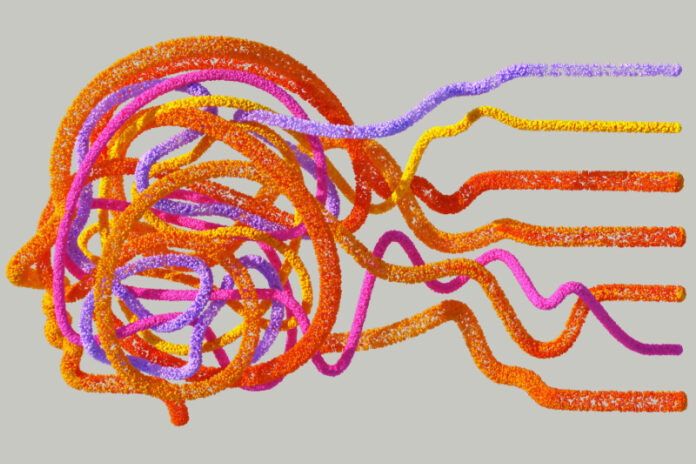Optical character recognition (OCR) may seem like a relic of the past, but for many businesses, especially in the Asia-Pacific region, it remains a vital tool. Meanwhile, the emergence of generative AI is creating new possibilities and reshaping industries.
In this second part of an exclusive, two-part interview, Chris Huff, Chief Growth Officer of Kofax, discusses the enduring relevance of OCR and the transformative potential of generative AI. He also shares how Kofax is using these technologies to transform its offerings and innovate for its customers.
You’ve moved on from the OCR era, but a lot of enterprises haven’t, especially in this part of the world. Do you still see OCR as a primary or secondary driver of your business?
OCR remains central to what we do. If you consider the analyst rankings around intelligent automation, where intelligent document processing is a subset of intelligent automation, we are number one in the most recent analyst rankings. It is still our bread and butter, but the market perceives it differently today. OCR is within this intelligent document processing, and it includes that transformation piece. Basic OCR is very simple, taking a paper-based document and scanning it in so you have an image.

However, now we’re dealing with a lot of digital documents that aren’t editable PDFs; they’re flat files. How do you get those flat files as the starting point, given there is less paper in the world? We can still handle paper, but we’re not banking the business on paper. The starting point now is more of these digital documents that still need to be transformed into machine-readable ones and zeros. That’s OCR today, where it’s less about the paper to digital. That still does happen in smaller markets.
The evolution for a Kofax customer has been really interesting. What I mean by that is when Kofax was selling in the 80s, 90s, and early 2000s, it was perhaps more of the back office, so digital imaging— think digital mailroom lockbox for the financial services industry-type use cases. That’s a very specific back office persona.
What we sell to today, especially over the last five years, with our TotalAgility workflow automation, is more front office, the digital transformation leaders, those leaders that are enhancing. If it’s within financial services, for example, maybe it’s the VP of Retail Banking, and they’re looking to create that offline to online seamless experience for the customers, all the way from learning about the bank, to onboarding a full application. That’s a different user than a back office document imaging. The customers that we’re selling to today are very different, but it’s the same large companies. That’s how we’ve started in the back office and then radiated out into the front office
With generative AI being infused into just about every single application out there, from the vendor side, as well as the end user side, is that something that you see as a positive thing, generally speaking? How is Kofax utilising generative AI altogether?
Kofax is taking generative AI very seriously. We’re moving quickly on it, but doing so in a mindful way. What does that mean? I’m comparing what generative AI is going to do to automation, to what mobile did to web 2.0, which was an improvement from web 1.0. Web 1.0 was largely just static websites. You would go there, see the information, then move on. Web 2.0 was all about interaction. There was user-generated content, you would leave reviews, and those reviews would be used to personalise services and experiences for you.
However, mobile was a game-changer. There were companies like Blockbuster and MySpace that were around during the web 2.0 era, but they saw mobile and said, “No, not for us.” The world moved past them.
Then, there were companies like Facebook and Amazon that were around web 2.0 companies. They saw mobile, and they said yes. They accelerated their business model with mobile. And then there were mobile-native companies— the Ubers, the Airbnbs, that were born during that era. I believe the same thing is happening right now. If you come across an enterprise software company that isn’t talking about generative AI, and figuring out how they’re going to use it to turbocharge their existing automation, they’re going to be the next MySpace or Blockbuster.
Kofax obviously fits into that middle category. We’ve been around, we recognise generative AI, we are infusing it, and we’re actually going to roll it out to market. It’s about six to seven months away, and we have it baked into the roadmap.
There are two specific use cases that we’re using generative AI for. The first one is around what we’re calling a developer assist. Whether it’s a technical developer or business user, it’s going to assist developers, so basically accelerating their builds. If you can envision the user interface, we do workflow automation. Right now, it’s a graphical user interface. That’s how we interact with the applications, meaning that we grab objects and we drag them around. That was the big step change in the early 90s.
This is the new GUI, and it’s natural language. You don’t even need to drag and drop anything; you just talk to it. So, within our platform, TotalAgility, there will be a user interface that has OpenAI’s ChatGPT, and it’ll ask you what you want to do.
For example, if we want to build a loan application use case from start to finish, we simply type it in. ChatGPT, which has learned from the entire history of the internet— a large language model encompassing 30 years of data— can assure us that the loan application process has already been documented. It’s out there on the internet— the complete process, along with the data models, forms, and decision points. ChatGPT retrieves all of this information, feeds it back into our TotalAgility platform, and prompts the platform to construct the entire process. It doesn’t just build the workflow; it also builds the decision points, forms, and data models. This is a game-changer, and it’s how we’re integrating the technology. This is what we call developer assist. Currently, we’re seeing a 20-fold increase in efficiency. What used to take 20 minutes now takes less than a minute. This efficiency can be extrapolated to an entire enterprise, considering all the developers they have and the time they spend.
The second area we’re focusing on is business insights, which basically helps our customers make decisions faster, increasing their decision velocity. Underwriters, for example, spend a lot of time reviewing numerous documents that come in, scoring them for risk to determine whether to approve or deny a claim. Now, they don’t need to do that. All of this has been done before, and we can bring that knowledge in. Using ChatGPT, we can score the documents instantly and provide a decision threshold— either a yes or a no. This greatly helps our customers in increasing their decision velocity. This approach can be applied to any situation where a decision needs to be made, whether it’s loan origination or home mortgage.
















